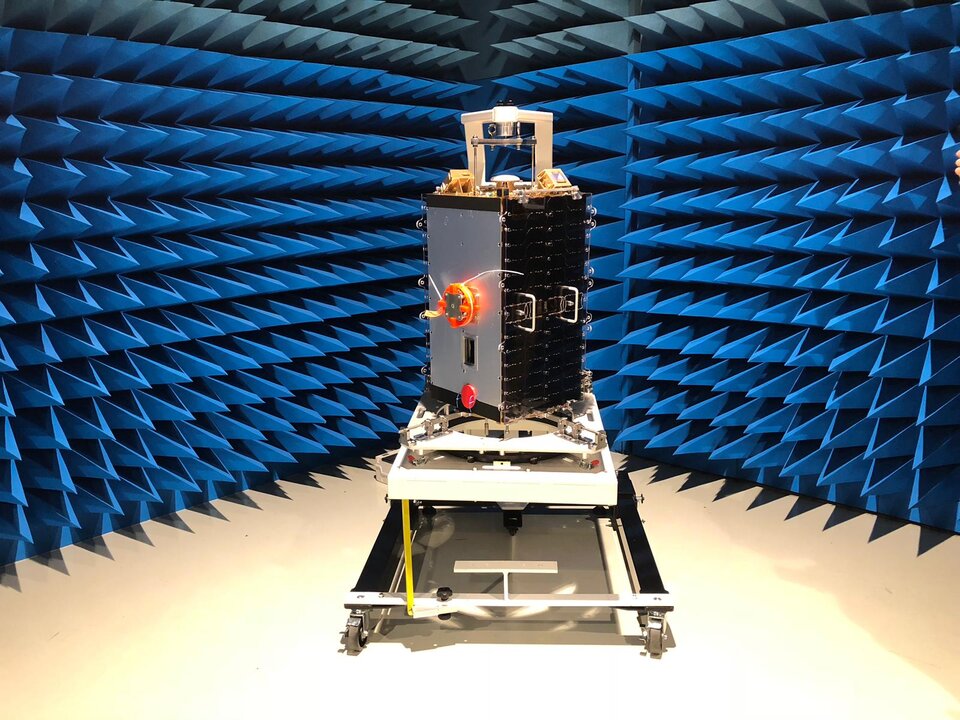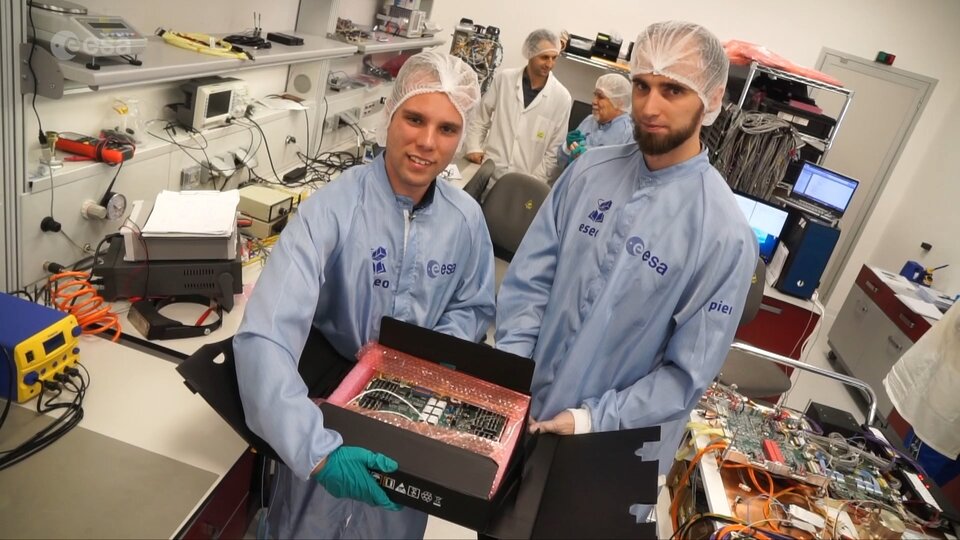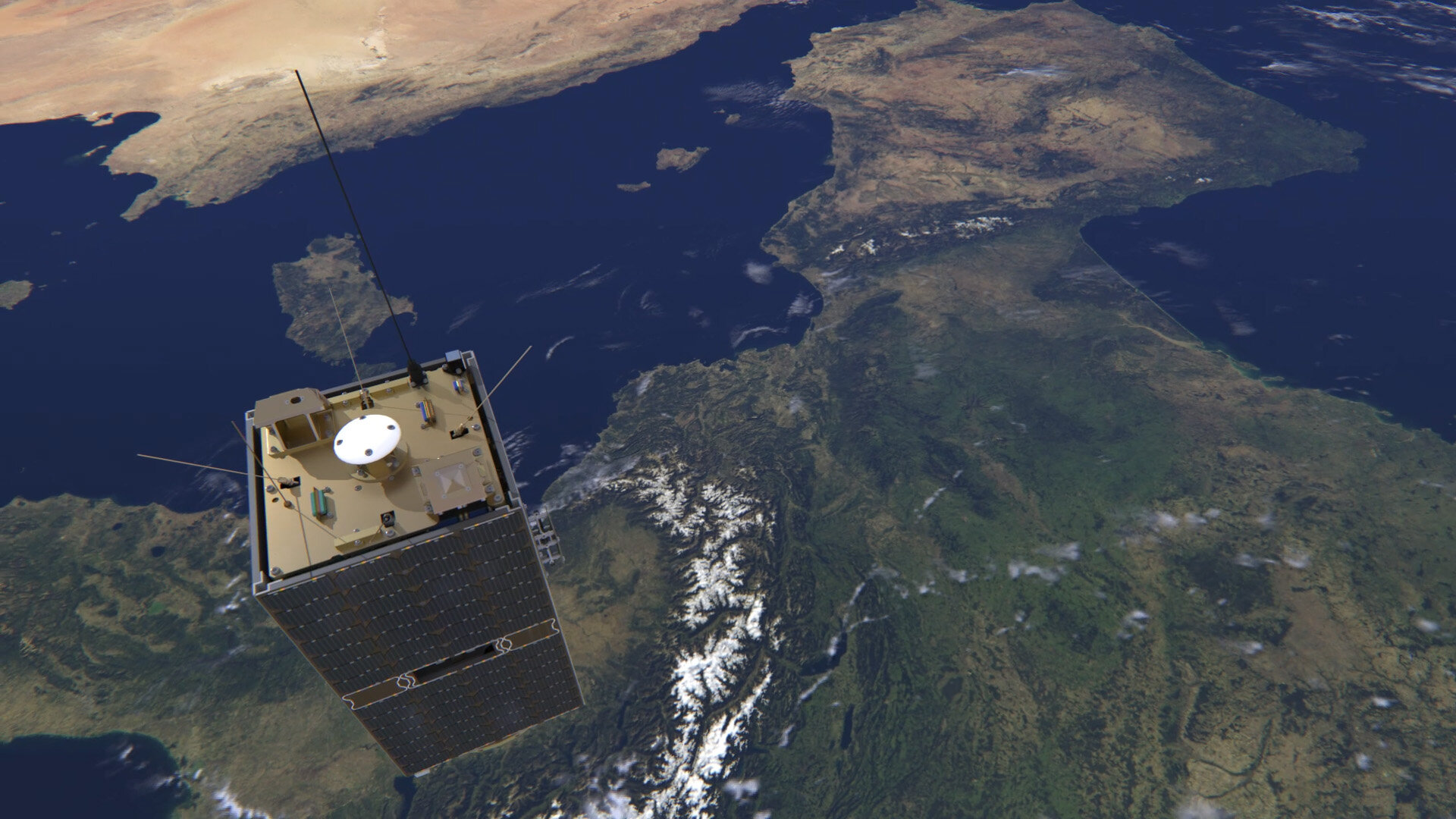The sun sets on ESEO as ESA’s pioneering student satellite mission concludes
After almost two years in space, ESA’s European Student Earth Orbiter mission – ESEO – is coming to a close. Designed by students, for students, it has raised the bar for what can be achieved by university student teams.
Numerous technical setbacks provided additional hurdles, but also extra opportunities for students to learn about the reality of working with advanced hardware and software in orbit around our planet.
A satellite by students, for students

ESEO was envisaged by ESA Academy’s hands-on space programme as a revolutionary educational project; nothing less than a fully-functional satellite, with scientific and technological payloads designed and operated entirely by university students. This provided a unique opportunity for students across Europe to gain significant practical experience in the design, development, launch and operations of a real space mission – for many, a dream come true.
In total, more than 600 students from ESA Member States have been involved in ESEO, from the project’s beginnings and during each phase and iteration, developing the scientific and technology demonstration payloads, key sub-systems, and the entire ground segment. Throughout the project, students took part in workshops and lectures, were directly involved in the technical project reviews, and actively worked on the design, development, and testing of their hardware and software. "I came to the ESEO project when I was applying for the doctorate program in the field of space debris mitigation,” recalls Dr. Chiara Palla, who worked on ESEO during her time as a PhD student at Cranfield University. “In fact, at Cranfield we were developing a drag sail mechanism to de-orbit the satellite. ESEO provided the chance to fully design, manufacture and test the device. This was an invaluable opportunity to engineer real space hardware and get hands-on with a space mission cycle in a fully international environment. I'm really convinced that the experience gained from ESEO has been driving me to successfully perform new research and lead new teams."
To make ESEO a reality, ESA teamed up with Prime Industrial contractor SITAEL. This leading Transportation and Aerospace Group developed the satellite platform, then performed the integration and testing of the whole spacecraft, including the integration of the student-built payloads and subsystems. In addition, they provided valuable and much appreciated technical support to the student teams under ESA’s coordination. Viktor Qiao was a student from the Hungarian Langmuir Probe team. He explains, “When I joined the Laboratory of Space Technology at the Budapest University of Technology and Economics, I was very lucky, because I was just in time to participate in the development of the Langmuir Probe for ESEO. It was the first engineering project that I worked on and I’ll never forget all the practical skills I learned, and the experience of working with ESA professionals and participating in the final test campaign. Working with SITAEL was an excellent opportunity to gain experience in engineering fields other than our own, such as mechanical and systems engineering. It also provided a glimpse into the day-to-day reality of work within the space industry. I’m now a PhD student, and I’ll always be proud of ESEO as the project that started my engineering career – hopefully only the first in a long list of projects to come."
A further valuable contribution by industry for the success of the ESEO project came from ST Microelectronics, which donated a set of Integrated Current Limiters used for the development of the power distribution board by the student team from BME Budapest.
A lasting legacy
Originally designed to be in orbit for just six months, project extensions have seen ESEO circling our planet for almost two years. The spacecraft performed commissioning of the platform but was unable to reach its nominal attitude, and therefore, ideal operational mode. Due to a variety of technical challenges and hurdles, the mission operators were only able to activate a subset of the payloads, leading to reduced success in achieving the science objectives.
Learn more about ESEO’s in-orbit challenges and successes.
Despite – and indeed perhaps also thanks to – the setbacks, the educational return for the students involved over the lifecycle of ESEO has been truly vast, and ESEO’s overarching educational objective was achieved: for university students to acquire hands-on experience of the full life cycle of a real space project, real-life troubleshooting included, in order to prepare a well-qualified technical workforce for the European space sector.
“Remarkably, the participating students took a complicated space mission all the way from conception to operation in orbit,” says Hugo Marée, Head of the ESA Education Office. “The hurdles they overcame along the way have contributed to a great deal of learning, and given them unparalleled experience that will serve them well in their future careers in the space industry.”

ESEO’s mission may be over, but its story does not end here. ESA and SITAEL are preparing a second In-Flight Experience Workshop for students, with sessions themed on lessons learned during the operational phase of ESEO, as well as practical classes using an engineering model of the satellite. Furthermore, ESA is planning full training weeks based on the ESEO experience. Papers will also be published to disseminate ESEO’s learning among the wider community.
Alberto Lucci was a student at the University of Bologna working in ESEO’s Mission Control Centre. Like many of those involved, he now looks back on his time with ESEO as an inspirational and transformative experience. “Working on ESEO was like being on a roller coaster,” he remembers, “from the happiness of the first signal we received, to the concern for newfound issues, gasping with satisfaction at making recoveries, to the long nights spent executing operational procedures. This adventure will always be a milestone of my career. ESEO represented a chance for personal and professional growth: it taught me that with passion and expertise you can transform your dream into a career!”


